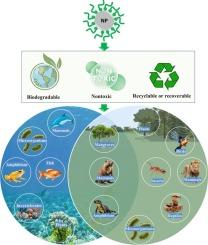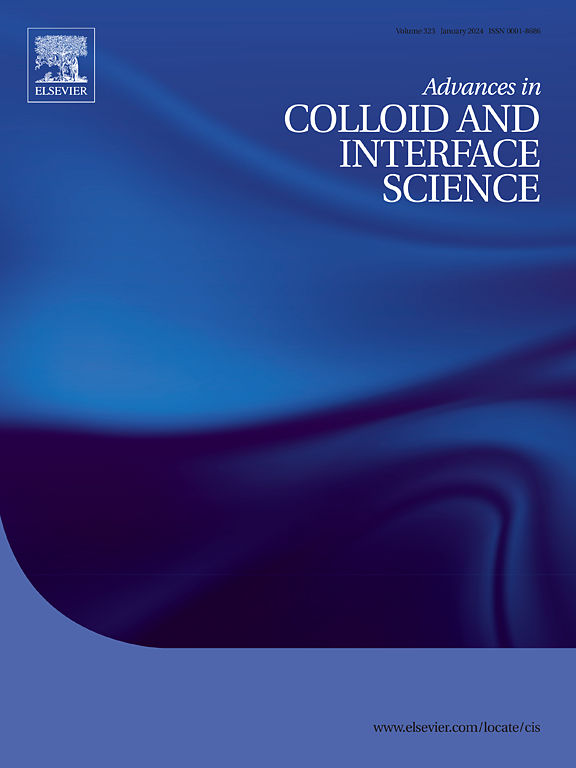迈向绿色和可持续电介质纳米流体:表面活性剂对稳定性、性质和法规的影响。
IF 19.3
1区 化学
Q1 CHEMISTRY, PHYSICAL
引用次数: 0
摘要
变压器流体的介电强度和导热性受到很大限制,阻碍了变压器在高压环境中的有效应用。添加纳米颗粒具有增强的潜力,但由于倾向于团聚,实现和保持稳定的分散是具有挑战性的。表面活性剂被认为是一种关键的稳定剂,通过油-纳米颗粒界面上的空间和静电相互作用,有助于纳米颗粒的分散和时间稳定性。本文综述了电介质纳米流体的制备方法,特别关注表面活性剂的功能和时间稳定性效应。表面活性剂处理的纳米流体表现出从几周到几个月的时间稳定性,并显著增强:击穿电压(高达93.17%),介电常数(高达47.4%),耗散系数降低(高达97.3%),电阻率增加(高达917.93%),导热系数增强(高达216.2%)。这些增强必然与控制电荷捕获、极化和声子传导的界面改变有关。介电常数的理论模型(如Maxwell-Garnett和Loyang模型等)与实验结果之间的差距被解决,以推荐考虑表面活性剂诱导的界面效应的增强。此外,可持续性方面,如生物降解性,毒性,可回收性和法规遵从性进行了讨论。本文的独特之处在于详细讨论了界面机制,模型增强和环保表面活性剂设计,并建议进入分子动力学和界面建模,以合理设计环境可持续的高性能介电纳米流体。本文章由计算机程序翻译,如有差异,请以英文原文为准。

Toward green and sustainable dielectric nanofluids: surfactant impacts on stability, properties, and regulations
Transformer fluids face major limitations in the dielectric strength and thermal conductivity of fluids, which hinders effective application in high-voltage applications. Adding nanoparticles holds potential for enhancement, but it is challenging to accomplish and maintain a stable dispersion because of a tendency toward agglomeration. Surfactants are found to act as critical stabilizing agents that aid in the dispersion of nanoparticles and temporal stability through steric and electrostatic interactions at the oil-nanoparticle interface. This review closely evaluates the preparation methodologies of dielectric nanofluids, paying specific attention to the functionality of surfactants and temporal stability effects. Surfactant-treated nanofluids showed temporal stability from a few weeks to a few months along with significant enhancements: breakdown voltage (up to 93.17%), dielectric constant (up to 47.4%), decrease in dissipation factor (up to 97.3%), increase in resistivity (up to 917.93%), and enhancement in thermal conductivity (up to 216.2%). These enhancements are necessarily connected to interfacial alterations that control charge trapping, polarization, and phonon conduction. Gaps between theoretical models of dielectric constant (like Maxwell-Garnett and Loyang models and others) and experimental findings are resolved to recommend enhancement considering surfactant-induced interfacial effects. Also, sustainability aspects such as biodegradability, toxicity, recyclability, and regulatory compliance are discussed. This review's uniqueness lies in a detailed discussion of interfacial mechanisms, model enhancements, and eco-friendly surfactant design, and suggestions for entering into molecular dynamics and interfacial modelling to rationally design environmentally sustainable, high-performance dielectric nanofluids.
求助全文
通过发布文献求助,成功后即可免费获取论文全文。
去求助
来源期刊
CiteScore
28.50
自引率
2.60%
发文量
175
审稿时长
31 days
期刊介绍:
"Advances in Colloid and Interface Science" is an international journal that focuses on experimental and theoretical developments in interfacial and colloidal phenomena. The journal covers a wide range of disciplines including biology, chemistry, physics, and technology.
The journal accepts review articles on any topic within the scope of colloid and interface science. These articles should provide an in-depth analysis of the subject matter, offering a critical review of the current state of the field. The author's informed opinion on the topic should also be included. The manuscript should compare and contrast ideas found in the reviewed literature and address the limitations of these ideas.
Typically, the articles published in this journal are written by recognized experts in the field.

 求助内容:
求助内容: 应助结果提醒方式:
应助结果提醒方式:


